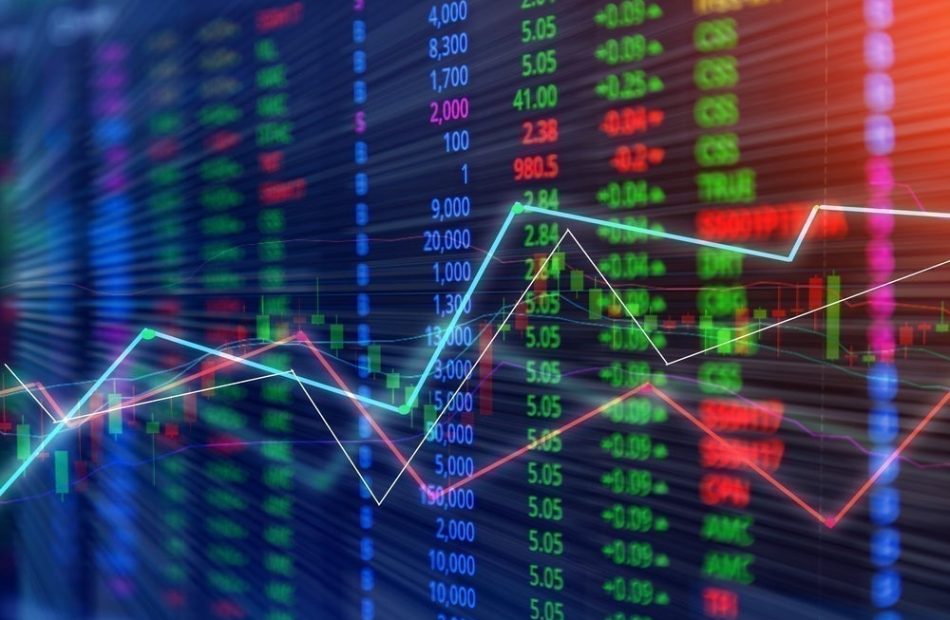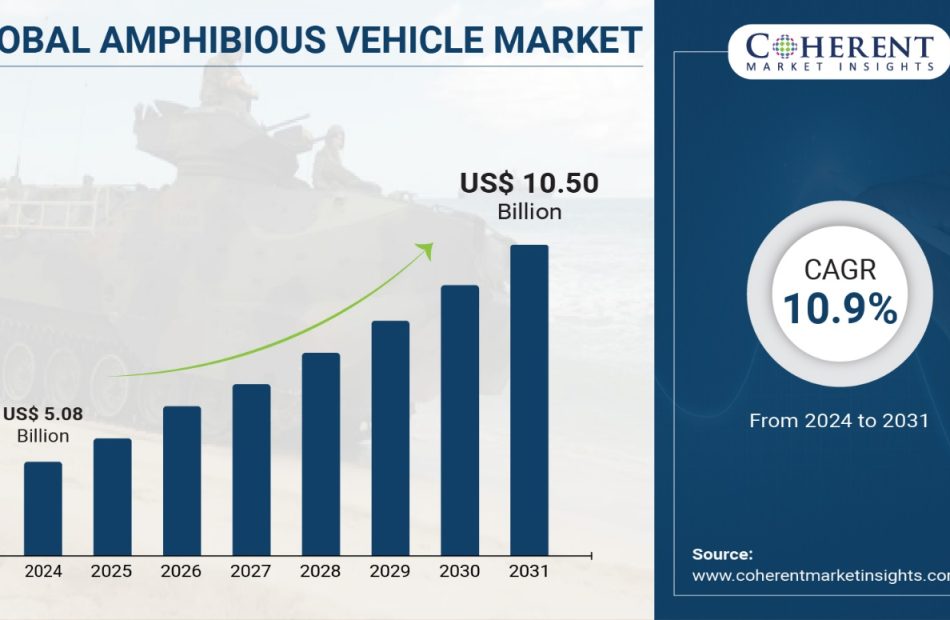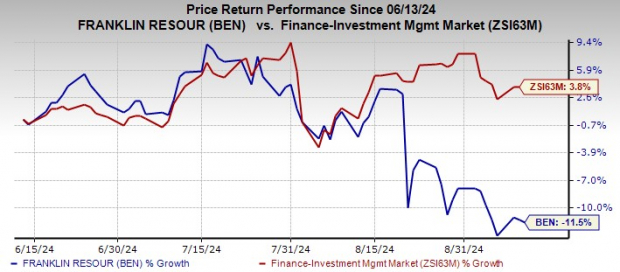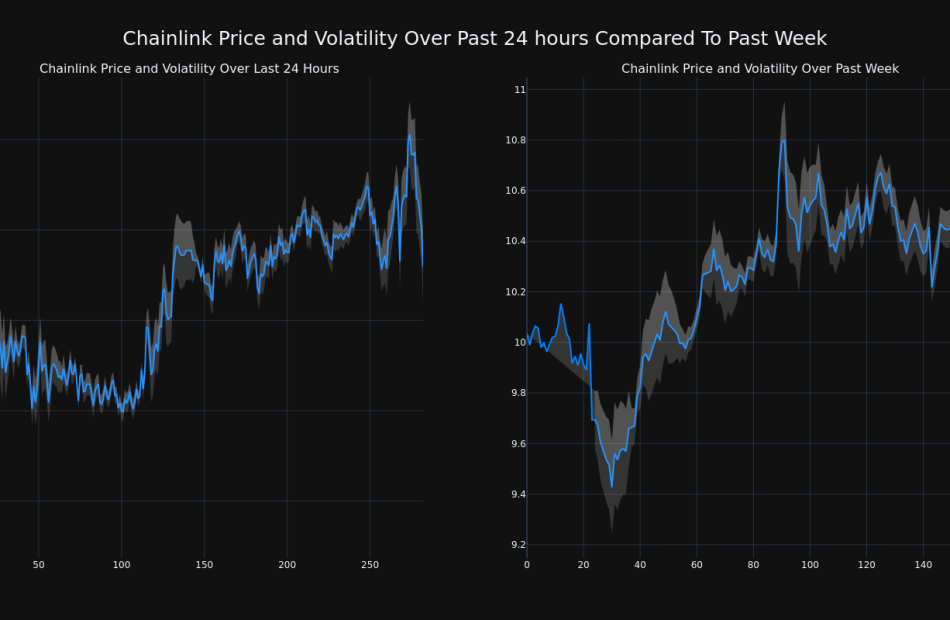Stocks Fall As Inflation Data Chills Rate-Cut Excitement, Chipmakers, Solar Sector Soar On Harris-Linked Boost: What's Driving Markets Wednesday?
Wall Street witnessed a broad sell-off on Wednesday, except for the tech sector, as investor optimism over disinflation progress cooled following a mixed August inflation report.
The Consumer Price Index (CPI) rose 2.5% year-over-year, slightly below the 2.6% estimate and down from July’s 2.9%, marking the slowest pace of inflation since February 2021. The bulk of this decline came from energy-related categories.
However, core inflation — excluding the more volatile components like food and energy — rose 0.3% month-over-month, surpassing expectations of 0.2%. The annual core CPI remained at 3.2%, reflecting persistent inflation in service-related sectors.
A key driver of inflation continues to be shelter costs, which rose 0.5% from the previous month—the sharpest increase since January — and account for nearly a third of the total CPI.
The report dashed hopes for a Federal Reserve rate cut in the upcoming meeting. Market expectations for a 50-basis-point cut plummeted to just 13%, down from 34% the day before, as per CME FedWatch.
The inflation data gave the U.S. dollar a lift and nudged Treasury yields higher across the board. Sectors most sensitive to interest rates, such as real estate, materials and financials, led the sell-off.
In contrast, tech stocks defied the broader market slump, driven by strong gains in the semiconductor space.
Nvidia Corp. NVDA surged 4.5%, buoyed by the market’s reaction to the latest U.S. presidential debate between Vice President Kamala Harris and former President Donald Trump.
The two candidates engaged in a back-and-forth about tariffs on goods, which would impact inflation and the chipmaking industry.
Solar stocks also rallied, with the Invesco Solar ETF TAN jumping over 4%, as the prospect of a Harris administration increased optimism for renewable energy policies. First Solar Inc. FSLR was the top performer within the industry, jumping over 12%.
Elsewhere, gold remained flat, while oil prices rebounded over 2% after Tuesday’s sell-off. Bitcoin BTC/USD dropped more than 2%.
Wednesday’s Performance In Major US Indices, ETFs
| Major Indices | Price | 1-day %chg |
| Nasdaq 100 | 18,865.96 | 0.2% |
| S&P 500 | 5,476.37 | -0.3% |
| Russell 2000 | 2,092.21 | -0.5% |
| Dow Jones | 40,436.47 | -0.7% |
According to Benzinga Pro data:
- The SPDR S&P 500 ETF Trust SPY was 0.3% lower to $547.10.
- The SPDR Dow Jones Industrial Average DIA fell 0.7% to $405.59.
- The tech-heavy Invesco QQQ Trust Series QQQ inched 0.2% higher to $459.93.
- The iShares Russell 2000 ETF IWM fell 0.4% to $207.30.
- The Technology Select Sector SPDR Fund XLK outperformed, up 0.9%. The Financials Select Sector SPDR Fund XLF was the laggard, down 1.4%.
Wednesday’s Stock Movers
- Lithium-related stocks surged on Wednesday after reports of production disruptions in China sent the price of the commodity climbing. Albemarle Corp. ALB, one of the world’s largest lithium producers, rallied 9.7% on the news.
- AppLovin Corporation APP surged 8.6% to $93.63 after Bank of America analyst Omar Dessouky reiterated a Buy rating and raised the price target from $100 to $120.
- Lucid Group Inc. LCID rallied 8.1% amid bullish remarks from Bank of America analyst John Murphy, CFA who expects the Gravity SUV to get a large total addressable market.
- GameStop Corp. GME tanked 13.8% as revenue missed expectations last quarter.
- Trump Media & Technology Group Corp. DJT plummeted 12.8% in reaction to the presidential debate.
Now Read:
Image: Shutterstock
Market News and Data brought to you by Benzinga APIs
© 2024 Benzinga.com. Benzinga does not provide investment advice. All rights reserved.
Warren Buffett Is Selling Apple Stock and Buying This Little-Known Stock Instead
Warren Buffett built Berkshire Hathaway into one of the largest companies in the world through intelligent acquisitions and prudent investments.
After famously eschewing technology stocks for years, Berkshire surprised Wall Street in 2016 when it reported a stake in Apple (NASDAQ: AAPL). Even more surprising were the subsequent share purchases that eventually made Apple its largest holding.
Last year, Buffett referred to Apple as being a “better business” than any other Berkshire owned, but great businesses are not necessarily smart investments. Berkshire sold 389 million shares of Apple in the second quarter, cutting its stake in half, and the company started a small position in the lesser-known Ulta Beauty (NASDAQ: ULTA).
To be clear, Berkshire still has 30% of its stock portfolio invested in Apple, but that represents a substantial reduction from 51% in the same quarter last year. Also noteworthy, Berkshire has allocated less than 1% of its portfolio to Ulta, but its novelty sets it apart from long-standing positions.
Here’s what investors should know about these stocks.
1. Apple
Apple reported solid financial results in the third quarter of fiscal 2024 (ended June 29). The company not only beat overall sales and earnings estimates, but also its sales exceeded expectations across every major product category except Macs. Revenue increased 5% to $85.8 billion, gross profit margin expanded 174 basis points, and GAAP net income increased 11% to $1.40 per diluted share.
Looking ahead, Apple is well positioned to maintain similar momentum. The company has a strong presence in several consumer electronics markets, including personal computers and smartphones. It also has a strong presence in several service verticals. Apple has one of the fastest-growing advertising businesses and it operates the leading mobile app store. Last year, the App Store earned more than twice as much revenue as Alphabet‘s Google Play Store.
However, Apple is also facing several headwinds. First, the Digital Markets Act in Europe forced the company to support third-party app stores on its devices, which could erode its dominance in the space. Second, Apple has lost so much smartphone share in China (its third largest market) that it no longer ranks among the top five vendors. Third, iPhones account for 45% of total revenue, but the company has yet to eclipse the iPhone sales record set in the first quarter of 2022.
Building on that, Apple possesses tremendous brand authority in consumer electronics, but the company has not launched a new viral product since AirPods in 2017. If that continues, Apple will struggle to exceed mid-single digit sales growth. Earnings may grow faster because the company has historically spent heavily on stock buybacks. But earnings growth that is largely dependent on share repurchases is a sign of a company with limited prospects.
Nothing I’ve mentioned so far is a deal-breaker, per se. The real problem lies in the disconnect between Apple’s growth prospects and its current valuation. Wall Street expects earnings to grow at 8.6% annually over the next three years, which makes its valuation of 33.5 times earnings look outrageous. Those figures give a PEG ratio of 3.9, a substantial premium to three-year average of 2.6. The sky-high valuation may explain why Warren Buffett slashed his stake in Apple.
2. Ulta Beauty
Ulta operates more than 1,400 stores across the United States, where it sells about 25,000 products spanning mass-market to high-end items from approximately 600 brands. Over the last few years, Ulta has secured a leadership position among U.S. beauty retailers due to store openings, effective marketing, compelling loyalty perks, and investments in e-commerce.
Ulta reported disappointing financial results in the second quarter. Revenue increased less than 1% to $2.6 billion, and same-store sales actually declined 1%. Meanwhile, gross margin contracted 100 basis points, and GAAP earnings declined 11% to $5.30 per diluted share. Management also lowered its full-year outlook, such that evenue and earnings are forecasted to decline 1% and 11%, respectively.
In a recent note, Morningstar analyst David Swartz attributed Ulta’s disappointing performance and guidance to competitive pressure, primarily arising from the rapid expansion of Sephora stores within Kohl’s locations. But he thinks the company will turn things around. “We forecast Ulta will expand its store base by about 20% over the next 10 years while achieving same-store sales growth of about 4%,” he wrote.
Ulta is undoubtedly facing headwinds, but the stock is priced more reasonably than Apple. Wall Street expects earnings to increase at 9% annually over the next three years, which makes the current valuation of 15 times earnings seem fair. Those figures give a PEG ratio of 1.6, which is a slight premium to the three-year average of 1.5.
I think patient investors can follow Berkshire’s lead and buy a small position in Ulta stock today. But small is the key word. I would start with no more than 1% of my portfolio and build my position opportunistically during pullbacks. But investors should bear in mind that Ulta has failed to outperform the S&P 500 over the last three- and five-year periods.
Should you invest $1,000 in Apple right now?
Before you buy stock in Apple, consider this:
The Motley Fool Stock Advisor analyst team just identified what they believe are the 10 best stocks for investors to buy now… and Apple wasn’t one of them. The 10 stocks that made the cut could produce monster returns in the coming years.
Consider when Nvidia made this list on April 15, 2005… if you invested $1,000 at the time of our recommendation, you’d have $662,392!*
Stock Advisor provides investors with an easy-to-follow blueprint for success, including guidance on building a portfolio, regular updates from analysts, and two new stock picks each month. The Stock Advisor service has more than quadrupled the return of S&P 500 since 2002*.
*Stock Advisor returns as of September 9, 2024
Suzanne Frey, an executive at Alphabet, is a member of The Motley Fool’s board of directors. Trevor Jennewine has no position in any of the stocks mentioned. The Motley Fool has positions in and recommends Alphabet, Apple, Berkshire Hathaway, and Ulta Beauty. The Motley Fool has a disclosure policy.
Warren Buffett Is Selling Apple Stock and Buying This Little-Known Stock Instead was originally published by The Motley Fool
Smart Money Move: Andrew Siegel Grabs $84K Worth Of Daktronics Stock
A significant insider buy by Andrew Siegel, Director at Daktronics DAKT, was executed on September 11, and reported in the recent SEC filing.
What Happened: Siegel demonstrated confidence in Daktronics by purchasing 7,160 shares, as reported in a Form 4 filing with the U.S. Securities and Exchange Commission on Wednesday. The total value of the transaction is $84,989.
At Thursday morning, Daktronics shares are down by 0.0%, trading at $12.19.
Unveiling the Story Behind Daktronics
Daktronics Inc designs and manufactures electronic scoreboards, programmable display systems, and large-screen video displays for sporting, commercial, and transportation applications. It is engaged in a full range of activities: marketing and sales, engineering and product design and development, manufacturing, technical contracting, professional services, and customer service and support. The company offers a complete line of products, from small scoreboards and electronic displays to large multimillion-dollar video display systems as well as related control, timing, and sound systems. The company has five reportable segments: Commercial, Live Events, High School Park and Recreation, Transportation, and International. The company makes the majority of its revenue from Live events.
Daktronics’s Economic Impact: An Analysis
Revenue Growth: Daktronics’s revenue growth over a period of 3 months has faced challenges. As of 31 July, 2024, the company experienced a revenue decline of approximately -2.77%. This indicates a decrease in the company’s top-line earnings. As compared to its peers, the revenue growth lags behind its industry peers. The company achieved a growth rate lower than the average among peers in Information Technology sector.
Insights into Profitability:
-
Gross Margin: The company shows a low gross margin of 26.4%, indicating concerns regarding cost management and overall profitability relative to its industry counterparts.
-
Earnings per Share (EPS): Daktronics’s EPS is below the industry average, signaling challenges in bottom-line performance with a current EPS of -0.11.
Debt Management: Daktronics’s debt-to-equity ratio is below the industry average. With a ratio of 0.32, the company relies less on debt financing, maintaining a healthier balance between debt and equity, which can be viewed positively by investors.
Financial Valuation Breakdown:
-
Price to Earnings (P/E) Ratio: Daktronics’s stock is currently priced at a premium level, as reflected in the higher-than-average P/E ratio of 58.05.
-
Price to Sales (P/S) Ratio: The P/S ratio of 0.7 is lower than the industry average, implying a discounted valuation for Daktronics’s stock in relation to sales performance.
-
EV/EBITDA Analysis (Enterprise Value to its Earnings Before Interest, Taxes, Depreciation & Amortization): Indicated by a lower-than-industry-average EV/EBITDA ratio of 6.15, the company suggests a potential undervaluation, which might be advantageous for value-focused investors.
Market Capitalization: With restricted market capitalization, the company is positioned below industry averages. This reflects a smaller scale relative to peers.
Now trade stocks online commission free with Charles Schwab, a trusted and complete investment firm.
Navigating the Impact of Insider Transactions on Investments
Insider transactions serve as a piece of the puzzle in investment decisions, rather than the entire picture.
In legal terms, an “insider” refers to any officer, director, or beneficial owner of more than ten percent of a company’s equity securities registered under Section 12 of the Securities Exchange Act of 1934. This can include executives in the c-suite and large hedge funds. These insiders are required to let the public know of their transactions via a Form 4 filing, which must be filed within two business days of the transaction.
When a company insider makes a new purchase, that is an indication that they expect the stock to rise.
Insider sells, on the other hand, can be made for a variety of reasons, and may not necessarily mean that the seller thinks the stock will go down.
Deciphering Transaction Codes in Insider Filings
Investors prefer focusing on transactions that take place in the open market, indicated in Table I of the Form 4 filing. A P in Box 3 indicates a purchase, while S indicates a sale. Transaction code C indicates the conversion of an option, and transaction code A indicates grant, award or other acquisition of securities from the company.
Check Out The Full List Of Daktronics’s Insider Trades.
This article was generated by Benzinga’s automated content engine and reviewed by an editor.
Market News and Data brought to you by Benzinga APIs
© 2024 Benzinga.com. Benzinga does not provide investment advice. All rights reserved.
Global Amphibious Vehicle Market to hit $10.50 billion, Globally, by 2031 at 10.9% CAGR, says Coherent Market Insights
Burlingame, Sept. 11, 2024 (GLOBE NEWSWIRE) — The global Amphibious Vehicle Market Size to Grow from USD 5.08 Billion in 2024 to USD 10.50 Billion by 2031, at a Compound Annual Growth Rate (CAGR) of 19.5% during the forecast period, as highlighted in a new report published by Coherent Market Insights. Amphibious vehicles provide unmatched mobility for diverse military operations such as rescue, patrol, surveillance, and counterinsurgency missions that require accessing both land and water theatres. Moreover, growing demand for amphibious vehicles in civil engineering projects such as wetland restorations and coastal protection works will further provide opportunities for market growth over the forecast period.
Request Sample Report: https://www.coherentmarketinsights.com/insight/request-sample/6922
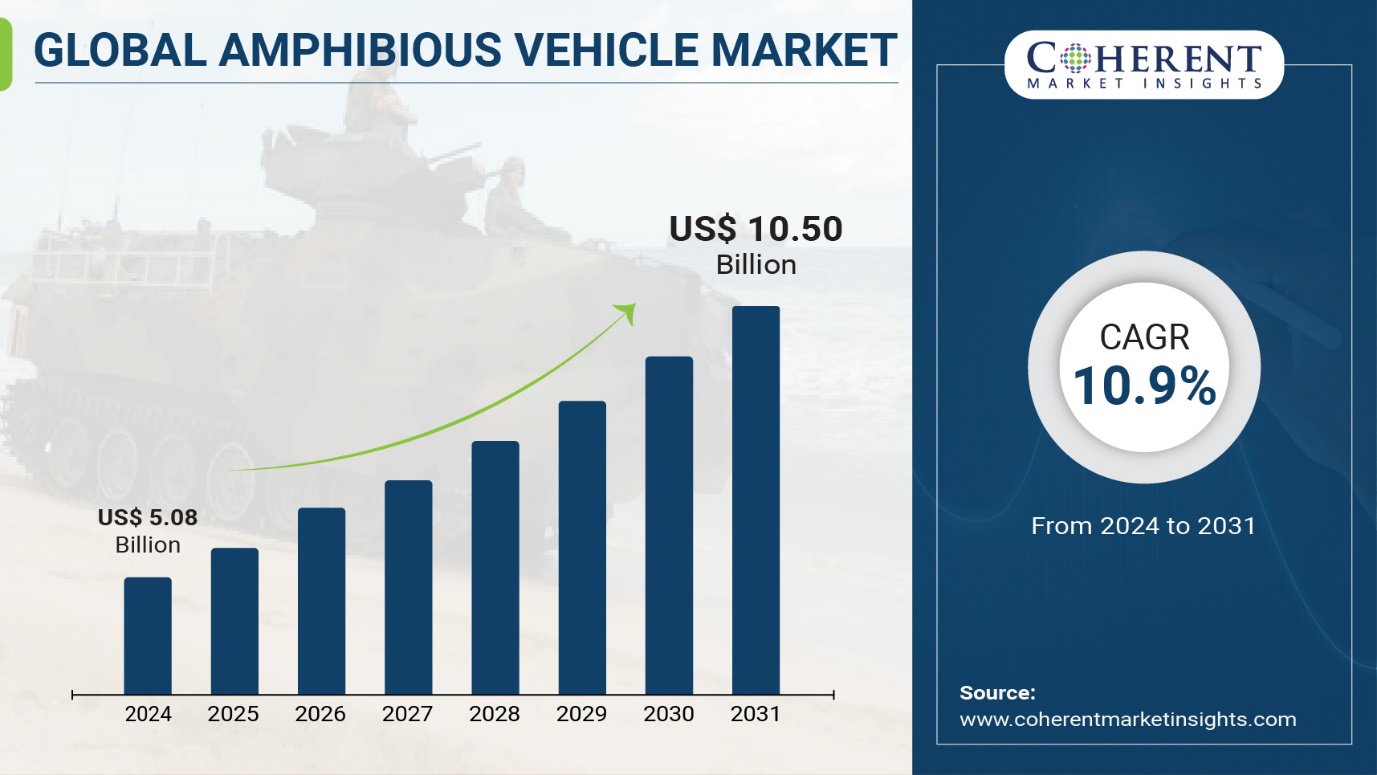
Market Dynamics:
The global amphibious vehicle market is witnessing high growth owing to growing defense budgets of various countries and increasing military modernization programs worldwide. According to Stockholm International Peace Research Institute (SIPRI), the global military expenditure witnessed a rise of 6.8% in 2021 to reach US$ 2.1 trillion. Growing government and defense spending on new amphibious vehicles for marine operations is a major factor driving the market growth. Furthermore, increasing upgradation of existing fleets to improve amphibious capabilities is also fueling the market demand.
Global Amphibious Vehicle Market Report Coverage
| Report Coverage | Details |
| Market Revenue in 2024 | $5.08 billion |
| Estimated Value by 2031 | $10.50 billion |
| Growth Rate | Poised to grow at a CAGR of 10.9% |
| Historical Data | 2019–2023 |
| Forecast Period | 2024–2031 |
| Forecast Units | Value (USD Million/Billion) |
| Report Coverage | Revenue Forecast, Competitive Landscape, Growth Factors, and Trends |
| Segments Covered | By Mode of Propulsion, By Application, By End User |
| Geographies Covered | North America, Europe, Asia Pacific, and Rest of World |
| Growth Drivers | • Military modernization programs • Civil applications and disaster response operations |
| Restraints & Challenges | • Harsh environmental regulations • High manufacturing cost |
Market Trends:
To tackle evolving threats on borders, focus on development of light amphibious vehicles is growing. Light amphibious vehicles have high tactical and strategic value due to their lightweight amphibious capabilities. For instance, in June 2022, BAE Systems was selected by the U.S. Army to deliver Light Amphibious Warships (LAWs). The 85-foot aluminum vessels are capable of transporting Marines and their equipment from sea to shore.
Procurement and modernization of amphibious assault vehicles by military forces worldwide is witnessing significant rise. Amphibious assault vehicles are critical for launching shore assaults from sea. In recent years, various countries have procured advanced amphibious assault vehicles to strengthen their amphibious warfare capabilities. For instance, in May 2022, the U.S. Marine Corps awarded contracts to BAE Systems and SAIC worth US$ 1 billion to supply 200 Amphibious Combat Vehicles (ACV).
Immediate Delivery Available | Buy This Premium Research Report: https://www.coherentmarketinsights.com/insight/buy-now/6922
X-ray segment is expected to hold a dominant position over the forecast period, owing to increasing demand for X-ray based amphibious vehicles in military and defense applications. X-ray vehicles are the most commonly used type of amphibious vehicles for their ability to traverse both land and water.
Ancestry testing segment dominated the market in 2023 and is expected to continue its dominance during the forecast period due to rising popularity of ancestry testing services among customers to trace their family history and origins. Amphibious vehicles find significant usage in transporting equipment and samples for ancestry testing applications.
Key Market Takeaways:
The global amphibious vehicle market is anticipated to witness a CAGR of 10.9% during the forecast period 2024-2031, owing to rising defense budgets of countries and increasing utilization of amphibious vehicles in military, patrol and rescue operations.
On the basis of type, X-ray segment is expected to hold a dominant position, owing to its wide application in military and defense organizations.
On the basis of application, ancestry testing segment is expected to hold the largest share owing to increasing popularity of ancestry tracing services.
On the basis of end user, hospitals segment is expected to hold a dominant position over the forecast period, due to growing usage of amphibious vehicles in emergency services.
Regionally, North America is expected to hold a dominant position over the forecast period, due to large defense spends and technological advancements in the region.
Key players operating in the global amphibious vehicle market include Hitachi Construction Machinery Co. Ltd., BAE System, Science Applications International Corporation, Wetland Equipment Company, General Dynamics Corporation, Lockheed Martin Corporation, Wilco Manufacturing, L.L.C, EIK Engineering Sdn Bhd, Marsh Buggies Incorporated, Rheinmetall AG, and EIK Engineering Sdn. Bhd. Strategic partnerships and collaborations between players is expected to help gain momentum in the market.
Recent Development:
In March 2023, BAE Systems received a contact from the U.S. Marine Corps to produce amphibious combat vehicles for personnel and command purposes.
In January 2023, IDV secure a deal with the Italian Navy to supply 36 Amphibious Armored Vehicels VBA personnel carriers.
Request For Customization: https://www.coherentmarketinsights.com/insight/request-customization/6922
Market Segmentation:
By Mode of Propulsion:
- Water-jet
- Track-based
- Screw propellers
By Application:
- Surveillance & Rescue
- Water Sports
- Water Transportation
- Excavation
By End User:
By Regional:
North America:
Latin America:
- Brazil
- Argentina
- Mexico
- Rest of Latin America
Europe:
- Germany
- U.K.
- Spain
- France
- Italy
- Russia
- Rest of Europe
Asia Pacific:
- China
- India
- Japan
- Australia
- South Korea
- ASEAN
- Rest of Asia Pacific
Middle East:
- GCC Countries
- Israel
- Rest of Middle East
Africa:
- South Africa
- North Africa
- Central Africa
Have a Look at Trending Research Reports on Automotive and Transportation Domain:
Global Armored Vehicle Market is estimated to be valued at US$ 28.45 Bn in 2024 and is expected to reach US$ 42.21 Bn by 2031, exhibiting a compound annual growth rate (CAGR) of 5.8% from 2024 to 2031.
Global electric vehicle tire market is estimated to be valued at US$ 3.42 Bn in 2024 and is expected to reach US$ 13.71 Bn by 2031, exhibiting a compound annual growth rate (CAGR) of 21.9% from 2024 to 2031.
Global Automotive VVT System Market is estimated to be valued at USD 68.46 Bn in 2024 and is expected to reach USD 102.14 Bn by 2031, exhibiting a compound annual growth rate (CAGR) of 5.9% from 2024 to 2031.
CNG and LPG vehicle market is estimated to be valued at USD 5.33 Bn in 2024 and is expected to reach USD 12.11 Bn by 2031, growing at a compound annual growth rate (CAGR) of 12.4% from 2024 to 2031.
Autonomous Vehicle Market, By Application, By Region – Market Size And Share Analysis – Growth Trends And Forecasts (2024-2031)
Author Bio:
Ravina Pandya, PR Writer, has a strong foothold in the market research industry. She specializes in writing well-researched articles from different industries, including food and beverages, information and technology, healthcare, chemical and materials, etc. With an MBA in E-commerce, she has an expertise in SEO-optimized content that resonates with industry professionals.
About Us:
Coherent Market Insights is a global market intelligence and consulting organization that provides syndicated research reports, customized research reports, and consulting services. We are known for our actionable insights and authentic reports in various domains including aerospace and defense, agriculture, food and beverages, automotive, chemicals and materials, and virtually all domains and an exhaustive list of sub-domains under the sun. We create value for clients through our highly reliable and accurate reports. We are also committed in playing a leading role in offering insights in various sectors post-COVID-19 and continue to deliver measurable, sustainable results for our clients.

Mr. Shah Senior Client Partner – Business Development Coherent Market Insights Phone: US: +1-650-918-5898 UK: +44-020-8133-4027 AUS: +61-2-4786-0457 India: +91-848-285-0837 Email: sales@coherentmarketinsights.com Website: https://www.coherentmarketinsights.com
© 2024 Benzinga.com. Benzinga does not provide investment advice. All rights reserved.
Owens & Minor Stock to Gain From New Collaboration With Google Cloud
Owens & Minor, Inc. OMI has announced a partnership with Google Cloud, owned by the parent holding company, Alphabet to enhance the existing capabilities of its cloud-based clinical inventory management system, QSight. The collaboration will combine the company’s expertise in optimizing the healthcare supply chain with Google Cloud’s Vertex AI platform, to tackle the modern supply chain management complexities and support the patients more effectively.
The latest development demonstrates the progress Owens & Minor has been making toward its strategic goals for the Products & Healthcare Services segment.
Following the news, shares of OMI edged up 0.2% to $14.42 at Tuesday’s close. By staying at the forefront of technology, including making investments with one of the most renowned innovators in the market, the company consistently delivers value to its customers and improves clinician efficiency. We expect the market sentiment on OMI stock to stay positive around this development.
Significance of OMI’s New Partnership
The implications of inefficient inventory management in healthcare can extend beyond the stockroom and into the operating room. This includes the risks of expired products being used in patient care and loss of inventory if products expire before. There is also an increasing pressure to deliver high-quality care while managing costs and optimizing efficiency — with less support from clinical staff.
However, traditional clinical inventory management systems often lack the real-time visibility and predictive capabilities to oversee the complex healthcare supply chains, leading to increasing costs and higher workloads for clinical staff.

Image Source: Zacks Investment Research
The partnership between Owens & Minor and Google Cloud aims to focus on enhancing QSight’s ability to help hospitals and health systems optimize how they manage the thousands of medical-grade supplies, high-value surgical implants and human tissue products required for patient care. The company will also lay the foundation for future platform and service innovations with the potential to improve the QSight customer experience.
Favorable Industry Prospects for Owens & Minor
A report by Research and Markets valued the healthcare inventory management software market at $331.5 million in 2021 and forecasts it to see a compound annual rate of 8.9% through 2028.
The rising complexity of the healthcare supply chain, such as worldwide sourcing, diversified product portfolios, regulatory constraints, and the demand for real-time monitoring, have increased the need for sophisticated inventory management systems. Healthcare organizations are implementing advanced inventory management solutions that provide greater visibility, automation and analytics.
Other Major Developments Within OMI
In July 2024, Owens & Minor announced a definitive agreement to acquire Rotech Healthcare Holdings, Inc., a home medical equipment provider based in the United States, for $1.36 billion in cash. The acquisition directly aligns with the company’s broader strategy to expand into the fast-growing home-based care space. In addition, it also bolsters its Patient Direct product offerings through expansion across a complementary portfolio including Respiratory, Sleep Apnea, Diabetes and Wound Care.
OMI Stock Price Performance
In the past year, Owens & Minor shares have plunged 10.8% against the industry’s 18.4% growth.
OMI Estimate Trend and EPS Surprise History
In the past 30 days, estimates for Owens & Minor’s 2024 earnings have remained constant at $1.57 per share. The company beat estimates in each of the trailing four quarters, the average surprise being 11.1%.
OMI’s Zacks Rank and Top MedTech Stocks
Owens & Minor currently carries a Zacks Rank #3 (Hold).
Some better-ranked stocks in the broader medical space are Boston Scientific BSX and AxoGen AXGN, each carrying a Zacks Rank #2 (Buy) at present.
Boston Scientific’s shares have risen 55.9% in the past year. Estimates for the company’s earnings per share have remained constant at $2.40 in 2024 and $2.71 in 2025 in the past 30 days. BSX’s earnings beat estimates in each of the trailing four quarters, delivering an average surprise of 7.2%. In the last reported quarter, it posted an earnings surprise of 6.9%.
Estimates for AxoGen’s 2024 loss per share have remained constant at 1 cent in the past 30 days. Shares of the company have surged 141.4% in the past year compared with the industry’s growth of 15.7%. AXGN’s earnings surpassed estimates in each of the trailing four quarters, the average surprise being 96.5%. In the last reported quarter, it delivered an earnings surprise of 200%.
Market News and Data brought to you by Benzinga APIs
© 2024 Benzinga.com. Benzinga does not provide investment advice. All rights reserved.
Transocean Secures New Drilling Assignment in the Gulf of Mexico
Transocean Ltd. RIG has secured a new assignment with the British oil major, BP plc BP, in the U.S. Gulf of Mexico. The company’s Deepwater Atlas ultra-deepwater drillship has been contracted for the assignment. The contract, valued at $232 million, has a duration of 365 days, with a 365-day option. Work related to the assignment is expected to begin in the second quarter of 2028.
The Deepwater Atlas drillship is one of the two eighth-generation drillships to join Transocean’s fleet in 2022. Notably, it is known to be one of the first drillships to be equipped with 20,000-psi well control capabilities, along with a hoisting capacity of 3.4 million pounds. Another eighth-generation drillship, Deepwater Titan, joined Transocean’s fleet the same year. With the help of these drillships, the Gulf of Mexico region is entering a new exploration phase under high-pressure and high-temperature conditions.
The seventh-generation drillships have a hoisting capacity of 2.5-2.8 million pounds, while the sixth-generation ones have a hoisting capacity of up to 2.0 million pounds. Seventh-generation drillships are limited to 15,000 psi well control systems.
The new eighth-generation drillships offer unique features with improved capabilities and cutting-edge tools that are well-suited for drilling wells in deepwater environments. These drillships, in particular, can operate at water depths of 12,000 feet and drill up to a depth of 40,000 feet.
Designed to improve sustainability, these drillships help optimize fuel consumption and reduce greenhouse gas emissions. Consequently, they have a lower carbon footprint associated with their offshore operations.
The Deepwater Atlas drillship was built by Seatrium, erstwhile known as Sembcorp Marine. It was delivered to Transocean in June 2022. Before its delivery, Transocean secured a drilling assignment for the rig with Beacon Offshore in August 2021.
Zacks Rank and Key Picks
Currently, RIG carries a Zacks Rank #3 (Hold), while BP has a Zacks Rank #5 (Strong Sell).
Some better-ranked stocks in the energy sector are PEDEVCO Corp. PED and MPLX LP MPLX, presently sporting a Zacks Rank #1 (Strong Buy) each.
PEDEVCO is engaged in the acquisition and development of energy assets in the United States and Pacific Rim countries. The company stands to benefit significantly from its holdings in the Permian Basin, one of the most prolific oil-producing regions in the United States, as well as in the D-J Basin in Colorado, which includes more than 150 high-quality drilling locations. Combined with bullish oil prices, this is expected to boost PEDEVCO’s production and overall profitability.
MPLX LP owns and operates a wide range of midstream assets. The partnership’s midstream assets include oil and natural gas gathering systems and transportation pipelines for crude, natural gas and refined petroleum products. MPLX is least exposed to commodity price fluctuations as it generates stable fee-based revenues. Furthermore, it surpasses its industry peers in terms of distribution yield, reflecting its commitment to returning capital to its unitholders.
Market News and Data brought to you by Benzinga APIs
© 2024 Benzinga.com. Benzinga does not provide investment advice. All rights reserved.
Franklin's August AUM Balance Improves on Favorable Markets
Franklin Resources, Inc. BEN reported its preliminary assets under management of $1.68 trillion as of Aug. 31, 2024. This reflected an increase of 1.1% from the prior month’s level.
The improvement in AUM balance was due to the impact of positive markets, partially offset by long-term net outflows. Outflows included $7.7 billion of long-term net outflows at Western Asset Management. As previously revealed, the Macro Opportunities strategy, included in Alternative AUM, is closing and had $1.1 billion of AUM as of Aug. 31, 2024, and $0.9 billion of net outflows in the month.
Break Down of BEN’s AUM Based on Asset Class
BEN recorded equity assets of $603.7 billion, which rose 2.5% from the previous month. Further, fixed income AUM of $574.5 billion at the end of August 2024 increased marginally from the prior month. Likewise, Multi-asset AUM was $172.9 billion, growing modestly from July 2024.
On the other hand, Alternative AUM decreased 1.5% to $251.2 billion from the prior month’s level. Alternative AUM in the reported month includes a $2 billion reduction related to the reclassification of assets under administration.
The cash management balance was $64.35 billion, up 4.6% from the previous month.
Our Viewpoint on BEN
Franklin’s efforts to diversify business through buyouts, solid AUM balance and a strong distribution platform will aid its top line. However, elevated expenses and volatility in investment management fees, which bring in the majority of its revenues, are near-term concerns.
Over the past three months, shares of BEN have plunged 11.5% against the industry’s 3.8% rise.

Image Source: Zacks Investment Research
Currently, BEN carries a Zacks Rank #3 (Hold).
Performance of Other Asset Managers
Cohen & Steers, Inc. CNS reported a preliminary AUM of $88.1 billion as of Aug. 31, 2024. This reflected a rise of 4.1% from the prior month’s level.
The increase in CNS’ AUM balance was driven by the market appreciation of $3.7 billion and net inflows of $8 billion, partially offset by distributions of $152 million.
Invesco IVZ reported a preliminary month-end AUM of $1.75 trillion in August 2024. This represented a 1.1% increase from the previous month.
IVZ reported net long-term inflows of $2.4 billion in August. Non-management fee-earning net inflows were $0.9 billion, while money market net outflows totaled $6.4 billion. Further, Invesco’s AUM was favorably impacted by solid market returns, which boosted its AUM by $16 billion. Further, FX increased the AUM balance by $7.3 billion.
Market News and Data brought to you by Benzinga APIs
© 2024 Benzinga.com. Benzinga does not provide investment advice. All rights reserved.
Chainlink Up More Than 3% In 24 hours
Over the past 24 hours, Chainlink’s LINK/USD price has risen 3.04% to $10.59. This continues its positive trend over the past week where it has experienced a 6.0% gain, moving from $10.04 to its current price. As it stands right now, the coin’s all-time high is $52.70.
The chart below compares the price movement and volatility for Chainlink over the past 24 hours (left) to its price movement over the past week (right). The gray bands are Bollinger Bands, measuring the volatility for both the daily and weekly price movements. The wider the bands are, or the larger the gray area is at any given moment, the larger the volatility.
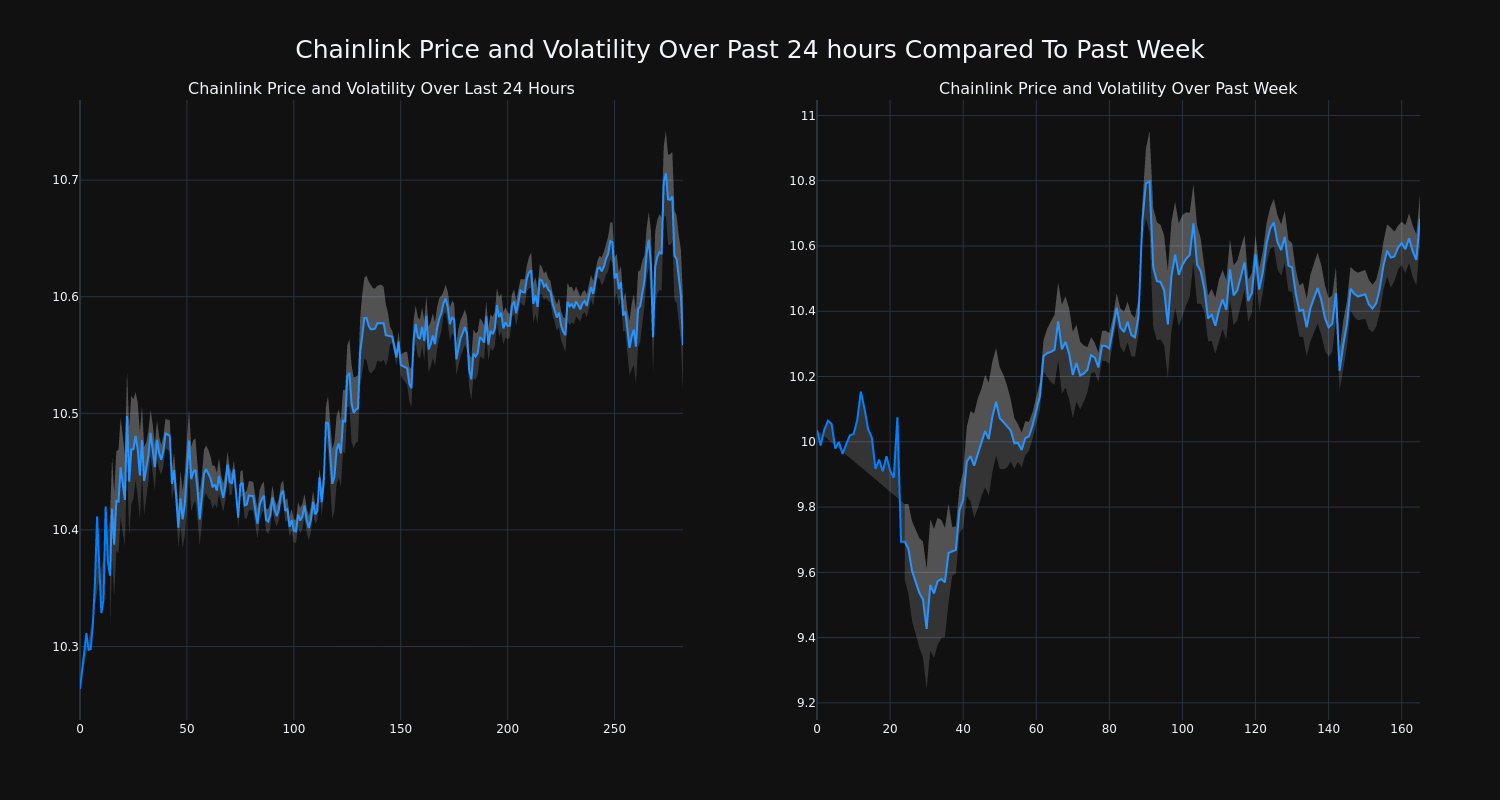
The trading volume for the coin has tumbled 1.0% over the past week along with the circulating supply of the coin, which has fallen 0.1%. This brings the circulating supply to 608.10 million, which makes up an estimated 60.81% of its max supply of 1.00 billion. According to our data, the current market cap ranking for LINK is #19 at $6.44 billion.
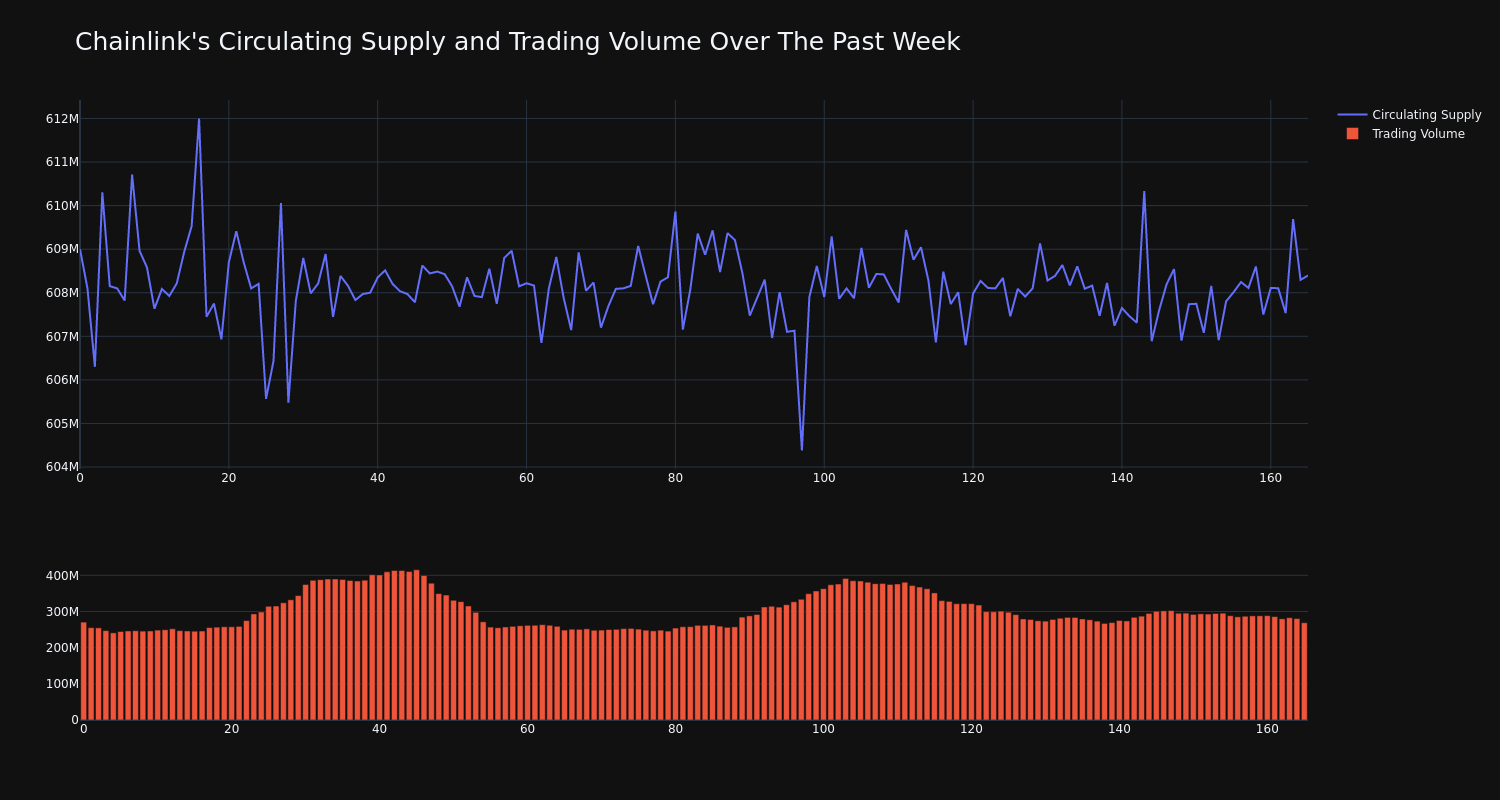
This article was generated by Benzinga’s automated content engine and reviewed by an editor.
Market News and Data brought to you by Benzinga APIs
© 2024 Benzinga.com. Benzinga does not provide investment advice. All rights reserved.
Solar Shares Climb As Harris Gains Momentum Post-Debate Against Trump: 7 Top Gainers In Clean Energy
Solar stocks rallied Wednesday, rebounding from recent four-year lows, following Vice President Kamala Harris‘s strong showing against former President Donald Trump at their highly anticipated presidential debate on ABC.
Investors appeared buoyed by Harris’s performance during the debate, which signaled potential stability for clean energy policies under a future administration, sparking renewed interest in the solar sector.
The Invesco Solar ETF TAN, a benchmark for the solar industry, surged by 3.7% by 11:05 a.m. ET, even as broader market sentiment remained bearish following a concerning August inflation report.
Harris’s Debate Performance Boosts Clean Energy Optimism
In a CNN/SSRS poll of 600 registered voters who tuned into the debate, 63% said Harris outperformed Trump, while 37% favored the former president. Prior to the debate, the same group of voters had been evenly split on their expectations of who would deliver a stronger performance.
Coco Zhang, an ESG research analyst at ING Group, noted that Harris is “likely to preserve the Biden administration’s most important climate legacy, emphasizing a more efficient implementation of the Inflation Reduction Act (IRA).”
Harris has long been a vocal advocate for clean energy. During a 2023 speech at Coppin State University, she reiterated her administration’s long-term goals: “We set an ambitious goal to cut our greenhouse gas emissions in half by 2030 and to reach net-zero emissions by 2050,” she said.
Harris’s Climate Legacy
Zhang emphasized that Harris’s campaign proposals in 2020 included an aggressive $10 trillion investment in decarbonizing the U.S. economy, the establishment of a carbon tax, and a ban on fracking. “We expect her to propose expanded clean energy spending, with a greater focus on environmental justice and affordable energy,” said Zhang.
Furthermore, a Harris-led administration would likely enforce stricter regulations on vehicles, oil, and gas industries, aligning with her vision to advance U.S. climate leadership on the global stage, particularly through continued participation in key climate summits like the United Nations Conference of the Parties.
Solar Stocks: Wednesday’s Top 7 Gainers
Below are the top gainers in the solar sector on Wednesday:
| Name | 1-day % chg |
| First Solar, Inc. FSLR | 7.98% |
| Shoals Technologies Group, Inc. SHLS | 7.80% |
| Canadian Solar Inc. CSIQ | 6.47% |
| Array Technologies, Inc. ARRY | 6.33% |
| Nextracker Inc. NXT | 5.80% |
| Sunrun Inc. RUN | 5.00% |
| SolarEdge Technologies, Inc. SEDG | 4.43% |
Read Next:
Photo created using Shutterstock and Midjourney.
Market News and Data brought to you by Benzinga APIs
© 2024 Benzinga.com. Benzinga does not provide investment advice. All rights reserved.

